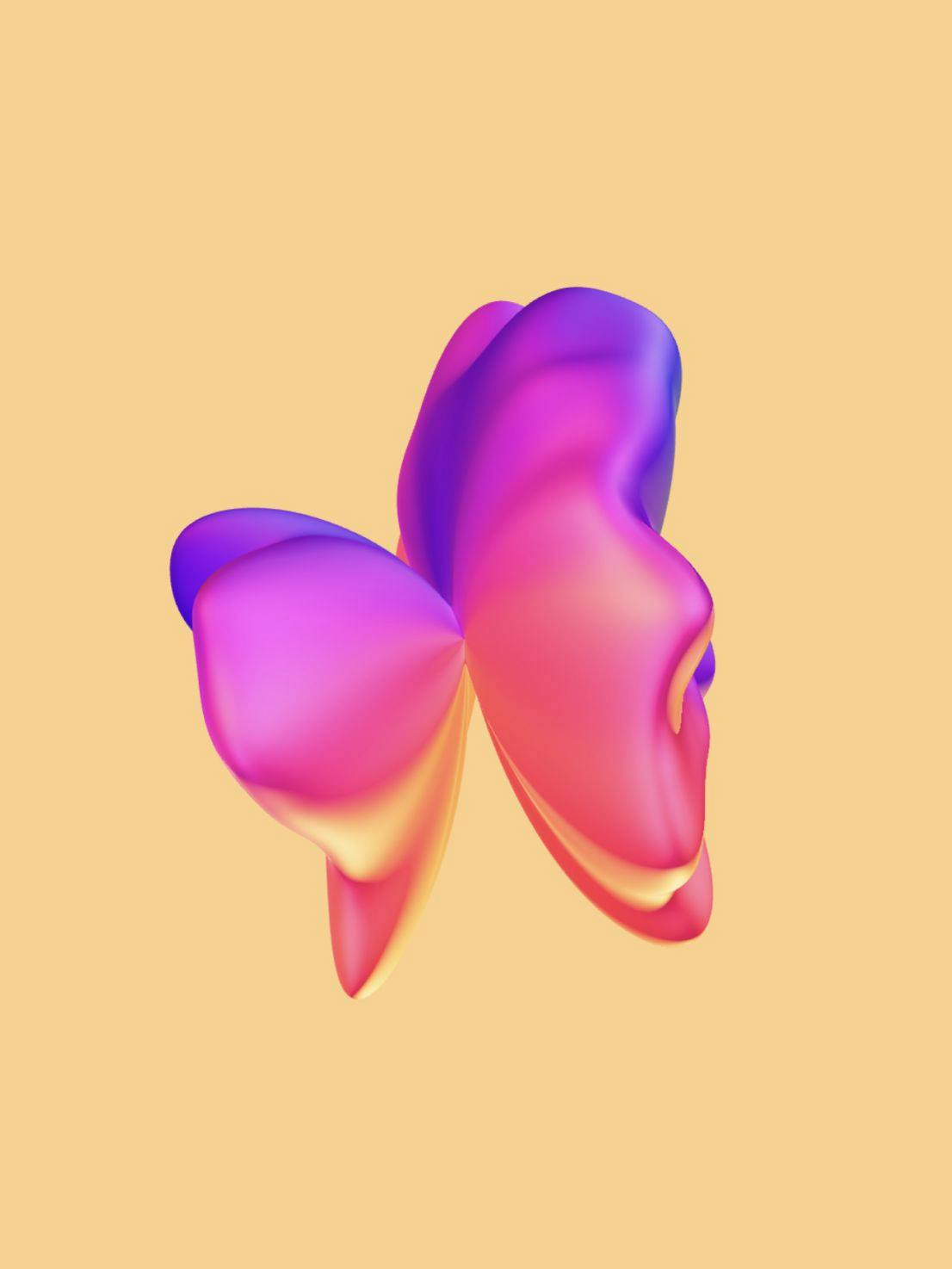This is about
Design
13 minutes
22 Sep 2022
This is about
Design
13 minutes
22 Sep 2022
How design is the key to a more inclusive Web3

We are always interested in learning new things and exploring the unknowns of emerging tech and design. Recently, this has led us to do a deep dive into the world of Web3 and to familiarise ourselves with all the exciting revolutions regarding the future of the internet.
Introduction
Over the past months, we have gotten the chance to work on two major Web3 experiences revolving around NFTs. After digging into the UX of many unfamiliar features and interactions we have learned a thing or two about ongoing web trends.
When it comes to a typical Web3 user experience today, one thing that stands out is the sheer amount of complexity and information that users are bombarded with. New users without previous blockchain experience are likely to shy away at first sight. Even for veterans in the space, many ordinary tasks are still frustrating.
To resolve this for future projects, conventional design principles can go a long way. There are however certain aspects worthy of extra consideration when designing for a good Web3 user experience.
Before we dig deeper into how that may be done, let’s take a closer look at Web3 and its origins.
What is Web3?
How did we get to Web3? First, we have to think about the two previous versions of the web.
Web1 — The earliest form of the internet, which emerged in the 90s, is now commonly called Web1. This first version of the web was built by relatively few tech-savvy users writing content and creating websites for the entire population of consumers. One key goal at this time was to make facts and content from key sources more accessible to the masses — encyclopedia style.
Web1 was inherently decentralised, running on multiple servers spread out among the creators. People were generally free to do or say whatever they wanted without facing censorship. Since most people were consumers rather than producers, Web1 is considered the “read-only” version of the internet.
Web2 — As servers and browsers became faster, the internet could be experienced at an accelerated pace. As an effect, web experiences could become more and more interactive. With the next version of the internet came the social media that we all know and more people started creating content rather than just consuming it. This next iteration of the internet turned the “read-only” Web1 into the “read and write” Web2 that we’re familiar with today.
The major players in Web2 have been a few large centralised corporations that own all the user data and content produced by users of their sites. These companies make much of their profit by selling this data and charging for ads. As more and more users have become increasingly tied to specific platforms, it’s become common practice to hand over our right of ownership to these corporations. What this essentially means is that we have to either trust or not care if the corporations use their powers over our data in a fair way.
Web3 — The ongoing rise of the next version of the internet can be seen as a counter-reaction to the increasingly centralised web of today. With Web3, decentralisation is key. To achieve it, blockchain technology, utilised for payments and ownership is combined with smart contractsSee also Create a smart contract to Mint NFTs and contribute to a good causeJournal to give people control over their data without relying on third parties. This version of the web brings brand new technologies, giving way to unfamiliar design problems that have never been solved before.
Create a smart contract to Mint NFTs and contribute to a good causeJournal to give people control over their data without relying on third parties. This version of the web brings brand new technologies, giving way to unfamiliar design problems that have never been solved before.
Web3 is already upon us to some extent. However, most features that might be used by a mainstream audience are arguably ahead of us.
Web3 will give people access to connected data just like we have gotten used to but in a decentralised manner. The governance of platforms in the era of Web3 will not come in the form of big corporations. Instead, platforms and products will be controlled by collaborating users. The collaborators can influence decision-making by voting on their preferred outcome, thereby having a say in features and product development. Additionally, data and identity will no longer be tied to any specific platform but will be owned by users themselves to influence as they wish.
Why should you care about Web3?
Web3 and blockchains might feel intimidating and unfamiliar. We have gotten increasingly used to the big platforms owning our data. But despite the current downsides, Web3 includes some core functionalities that can be highly useful to many people:
- Transparency between people and institutions, to rebuild and increase trust
- Redistributing power from institutions to the people, including creators and artists
- Strong communities and inclusion
- Simplified, faster and more inclusive payments
- Enabling people to own their own data and identity
- New ways of collaborating on design decisions
The current state of ”Web3”
Even though Web3 sounds great in theory, there is still a multitude of functionality that needs to improve before this next version of the internet becomes approachable and useful to most of us in our everyday lives. Unless you’re a crypto enthusiast fully on board the hype train, there are many reasons why you might not yet feel fully assured about this strange new world.
To get a sense of what other newcomers think, I reached out to a couple of people who, like me, have recently gotten curious about Web3, yet are new to the ideas and functionality. I asked what they thought about the current state of Web3. Here are some concluding impressions:
- Info overload is prominent as a result of the complexity and sheer amount of constant activity going on
- Hype, countless buzzwords and major FOMO seem to be questionable core drivers for the current hype
- Crypto bros have taken over Twitter feeds to brag about purchases and their latest minted pixelated apes
- Things aren’t as decentralised as they are portrayed, and empty promises of decentralisation cause a feeling of inauthenticity toward the entire movement
- Dehumanisation seems to be approaching as a consequence of anonymous digital identities and communities who don’t even know each other face to face
After discovering this, it’s easy to conclude that Web3 might not be for everyone. At least not what is portrayed as Web3 today.
It’s common for novel and complex phenomenons to be difficult to embrace for newcomers and Web3 is not unique in this sense. Most new technologies go through phases of development, including periods of overwhelming hype that often just appeal to a small group of enthusiasts. But even if you are a believer and feel motivated to get involved today, Web3 still has some major obstacles before it can feel truly approachable to newcomers.
Even though Web3 today is not the promised utopia many imagined, there is still hope for its future development. I believe that many things in the space are about to change soon.
Design Web3 to become a better solution
Alright, so the current state of Web3 might not be ideal for most people. But what’s actually needed to make this stuff feel beneficial to the public? I’m certain that a big part of the solution lies within the realm of design.
Design for the unrealised utility of NFTs
You have most likely heard of them. Or at least seen them. NFTs (non-fungible tokens) have been all over the internet this year, and they have changed the way many people think about digital ownership and scarcity. This phenomenon has also probably changed the way even more people think about seemingly absurd investments and how much a png file is actually worth.
Whether they love or hate them, few people currently focus on the fact that NFTs can be tools centred around utility instead of simply pictures of golden apes.
NFTs essentially prove ownership over digital assets. This feature can be utilised by smart contracts using set rules to trigger other functions happening automatically and securely, without the need (or possibility even) for human interference. As a result, human interaction (and error) can be removed from a chain of events, which may result in increased trustworthiness.
One key design challenge to solve is how to create products that not only are, but also feel trustworthy without demanding that every single user needs to understand all the underlying technology.
Today many NFT-related projects generally view NFTs as the product themselves. If we instead were to take advantage of other features of NFTs, such as the smart contract interplay, the utility could reach more people. NFTs could be baked into other parts of life and provide benefits to the mainstream. They could be used to verify ownership or commitment towards anything imaginable. Examples could be receipts for physical products or tickets to an event. Owning an NFT can also give you automatic access or powers within decentralised autonomous organisations.
A percentage of the revenue from trading an NFT can be programmed to go to a certain wallet, which can help distribute funds to the people who should receive them without requiring mediators. The payment happens automatically, without human interference.
Keeping this in mind this, NFTs can serve as important new means of generating income, both for artists trying their wings in the digital space and for the funding of charities and donations. NFTs may also serve as a way for creators to connect and create bonds with their most dedicated fans.
A final significant aspect of NFTs is how they can change the way people think about identity. People have started moving further away from traditional Web2 identities, and the importance of gender, age and appearance is diminishing. Using NFTs, people can portray themselves using unique digital identities, which can be fully anonymous, owned and controlled as desired.
Designing products which can leverage the changed identity attitudes — without forcing the aged Web2 identity standards — may have a big advantage over products that fail to do so in the future.
Design platforms for increasingly free customers
If corporations no longer own your data, you are not tied to any specific product. Therefore, there is no need to stick with inferior products just because you committed to using them in the past. Imagine bringing all your Facebook friends away from the Facebook platform and onto a new one that you feel can serve you better — and then doing it all again once something even more preferable comes out. At the same time, your friends are free to pick other platforms that serve them best, without losing the ability to interact. User loyalty shoulddepend on good design and subjective benefits instead of being unwillingly hooked to a specific platform.
This might sound impossible today, but could become the new reality with Web3. It would in effect mean that user loyalty will depend on how good products are rather than how “trapped” people feel in using them. Good products are directly linked to good design, meaning that design could have an even bigger impact on product success in Web3 than ever before.
If people are free to choose products as they wish, the monoculture mentality of Web2 could evaporate, giving way to increased variation in design. One size does not have to fit all.
Design experiences for new personas
Web3 experiences need to stop focusing on experts. It’s time to design with humans in mind.
”Web3 can be complex, but everyone shouldn’t need or even want to know all the details to be able to take part in the benefits.”
Products should stop focusing on design for well-educated crypto nerds. As more and more new users take their first steps, product design within the space must shift focus toward new types of personas. Good design, using existing mental models and familiar concepts, could facilitate the usability of Web3 products in two different ways.
Sometimes, the complex underlying technology (e.g., detailed blockchain- or smart contract mechanics) is not necessary to understand what the actual value is for a user. In this case, design can be utilised to hide unnecessary complexity in order to to avoid overwhelming users.
Other times, the underlying technology is essential to make the most out of product usage and provide users with value and utility. Design can then be leveraged to explain the complexity by clarifying details and onboarding users. Good UX, visuals and copy can seal the deal when determining if a complex Web3 product will become successful or a flop.
Design in new ways. Together.
Is the hacker mentality of Web1 coming back in a new form with Web3?
Web3 relies on open-source collaboration to evolve. For this to work, the way designers collaborate will need to mature. Asynchronous collaboration is not as common in the design realm today as it is when it comes to open-source development. As designers, we can learn from developers, and the way designers work will need to evolve to allow for open source design processes to thrive.
The way developers collaborate on code (using version updates and branching, for instance) is technical by nature. The process is created by developers for developers. The practices already in place might therefore not be the ideal way to collaborate when it comes to design decisions, and new ways of working together will need to emerge.
If we as designers can embrace open source collaboration, we can fundamentally speed up design processes. We also have the opportunity to establish new methods of learning from the contribution of other designers. Continual feedback loops and the opportunity to tinker with other people's contributions will lead to previously unseen outcomes.
Web3 could also bring back a lost hack mentality and bring forward authentic creative expression for people. Focus on craft may increase if people might start sharing things that they actually made instead of the generic social media posts that we’ve gotten used to through Web2.
Conclusion
We’re at an interesting point in history: blockchains have been slow, expensive and ineffective. That is all about to change.
Web3 is complex. Its current form often feels exclusive and hard to grasp for newcomers. Blockchains need to become faster, cheaper and reduce their environmental impact to be truly useful. People need a clearer use case before being willing to adapt to most aspects of Web3. As these changes start to happen, Web3 also needs to be redesigned to focus less on the expertise of the underlying technology and focus more on the users.
Future projects and products that can understand new users and leverage the change in user behaviours will most likely be the winners in the future of the internet. Design will play a key role, and methods of improving user experience and designing collaboratively will evolve.
If we step away from large centralised platforms, and if users can regain ownership of their data, a new, more varied mix of platforms would emerge. Users should be able to choose freely what products they want to use while keeping the keys to their data. For products and organisations to be able to have a competitive advantage, their design will need to become more varied and offer a clear value to users instead of hooking people to specific platforms and retaining them by making it hard to escape.
The technology behind Web3 could and should be able to benefit everyone. Good design can help make Web3 the inclusive space that it can be — a space that is more equal for all.
Droplets
Droplets
Sign-up to get the latest insight from 14islands. We send a newsletter only once every quarter with inspirational links and creative news. It's short and sweet. You can unsubscribe it at any time.



